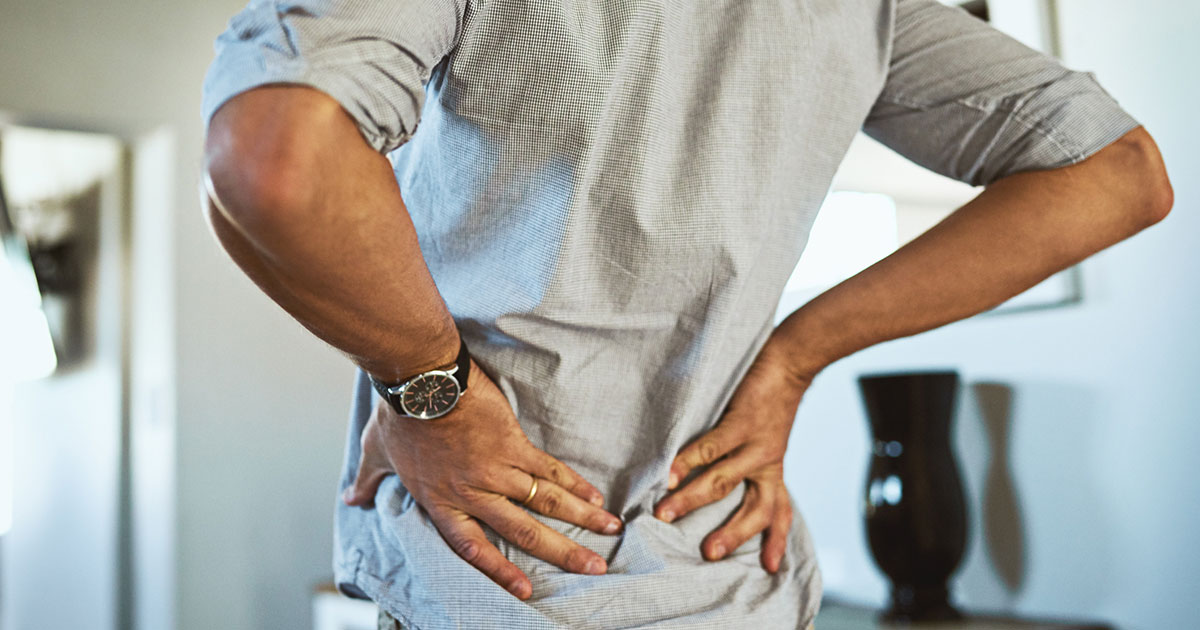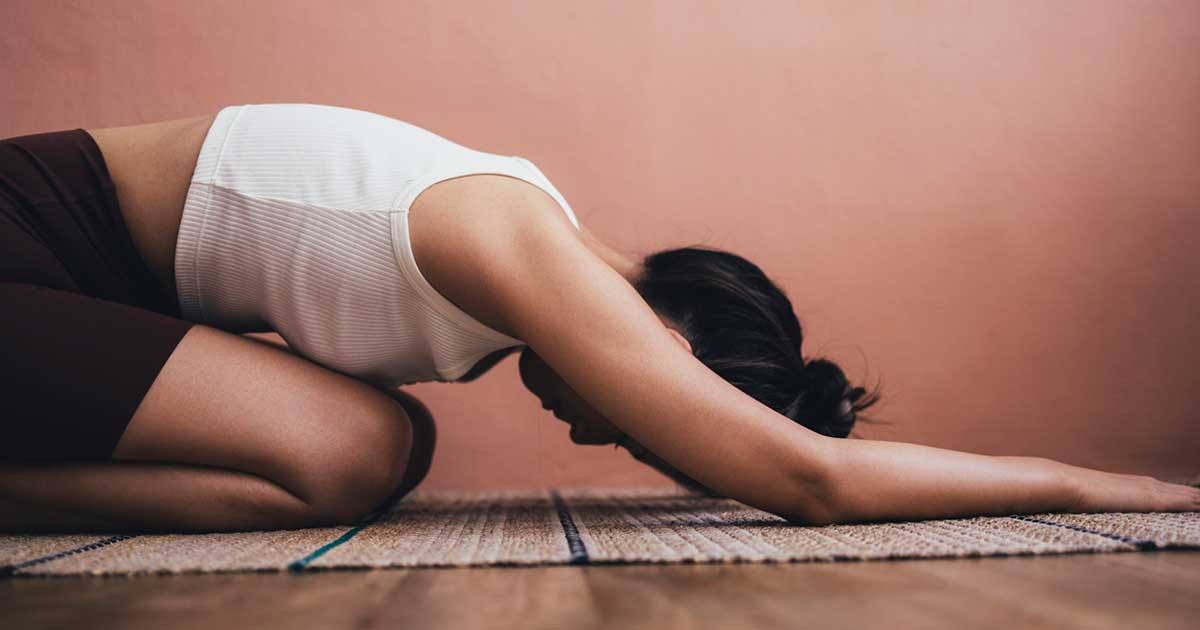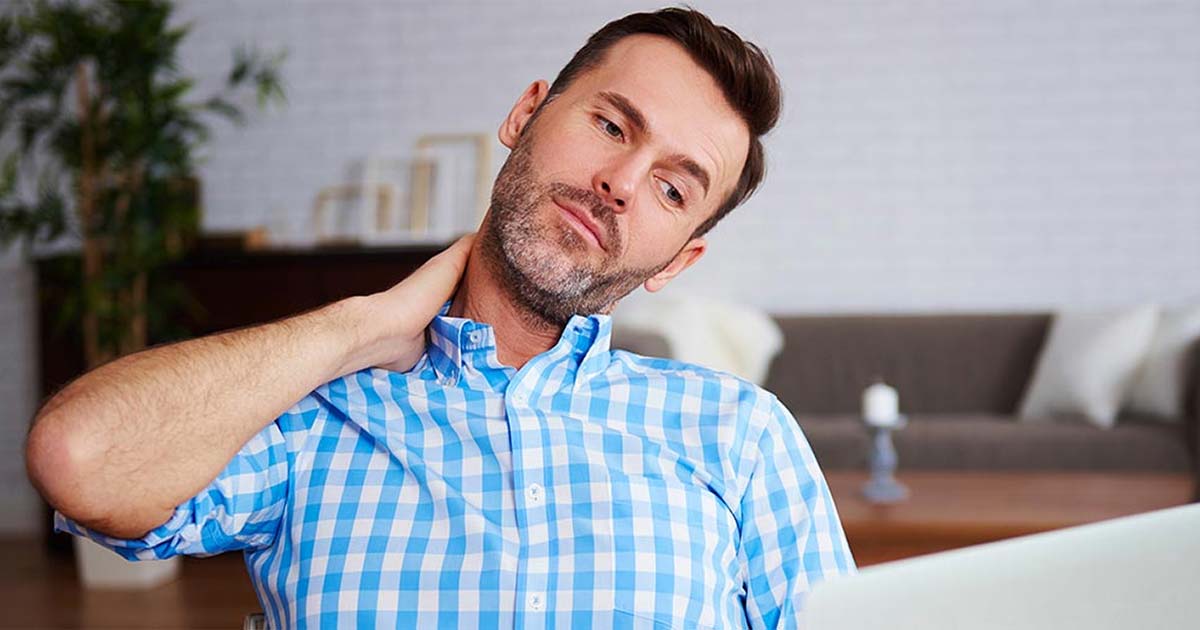Stretches and Exercises for Lower Back Pain, from a PT
Advice to improve your movement, fitness, and overall health from the world's #1 in orthopedics.
If you have a back, you’ve almost certainly had lower back pain. Roughly eight in 10 Americans report experiencing back pain at some point during their lives, with the lower part of the spine most affected.

For people in pain, the prospect of moving can be understandably frightening. After all, motion can trigger pain, so sitting (or laying) still can feel safe. But the key is not to freeze, says Kimberly Baptiste-Mbadiwe, PT, DPT, OCS, SFMA, a physical therapist at HSS.
“It’s very important to keep mobile as we age, even if we have pain. Our bodies are meant to move,” Baptiste-Mbadiwe says. “When you stop moving, everything tightens up, and that can make the pain worse.”
Although in some cases surgery is necessary to correct significant structural issues, such as bulging discs, narrowing in the spinal column or neurologic symptoms, a routine of simple stretches often can lead to dramatic improvements in pain and mobility.
Working with a physical therapist, or on your own, would help to identify which movements are painful and which you can tolerate. “If you find something that helps, perfect,” Baptiste-Mbadiwe says. “And that might be something you might want to do indefinitely to keep your back feeling limber and as free from pain as possible.”
Disc Problems
Many people develop low back pain as a result of one or more herniated discs in the spine. These discs, which consist of a fibrous outer layer surrounding a gel-like center, cushion the vertebrae and prevent them from pinching the spinal cord. Trauma to the back, or even the normal aging process, can cause discs to rupture or become distorted, potentially leading to irritation of the nerves in the back and limbs.
If the problem is severe, your physician may recommend surgery to repair or replace a herniated disc. In milder herniations, the right kind of stretching—in the right amount—can take stress off the spine and give the affected disc time to heal, Baptiste-Mbadiwe says.
“For a herniated disc, too much stretching in a forward position—like touching your toes—is not advised. You want to focus on stretches that comfortably extend and maintain your spine in a neutral position, instead of those in which you compress it,” she says.
Sitting at a computer or behind a desk for long periods of time is not friendly to irritated discs. “When you’re sitting, you’re bending at the hip and lower spine and you don’t realize it. Over time, just being in that position won’t be comfortable for the disc,” she says.
Be alert to any stretch that triggers nerve symptoms down the legs or causes the pain to worsen. “In that case, you want to find something that works better or try not to do so much,” Baptiste-Mbadiwe says. “You should also counterbalance the stretching with strengthening to build up the muscles around the affected disc.”
To help ease the strain on the lower back while at work, do this stretch every hour or so.
Lumbar Extension Standing
- Stand tall with your hands on your hips.
- Lean back and allow your low back to arch. Use your hands to assist the motion further in your low back.
- Hold for 5 seconds, then return to the starting position.
- Repeat up to 10 times daily or as needed when symptoms occur.
Spinal Stenosis
Degeneration of the bones in the spine, called spinal stenosis, can also lead to low back pain. Unlike with disc problems, however, movements that extend the spine, such as bending backwards, can aggravate the symptoms by compressing the nerves even more.
Baptiste-Mbadiwe recommends stretches that are either neutral for the spine or involve flexion of the spine, such as bending over to touch one’s toes, for people with stenosis. “You can do it as much as you need, up to every hour,” she says. Again, however, if stretching leads to worse pain or numbness and/or tingling in the extremities, stop performing the exercise and seek medical attention.
Muscle Spasms
Sometimes low back pain results from spasms or other problems in the muscles, including the paraspinal muscles surrounding the spine, the quadratus lumborum muscles on the left and right of the abdomen and the hip flexors (located in the front of the hip). Spasms and weakness in the hamstrings (a group of three muscles along the back of the thigh) and the gluteus maximus of the buttocks can also lead to pain in the lower back.
“Stretches may be uncomfortable initially, as a result of tightness,” Baptiste-Mbadiwe says. Try to find stretches you can tolerate. As you restore mobility to the painful area, quality of movement will start to improve.
Assistive devices, such as foam rollers, are helpful if you can tolerate them, Baptiste-Mbadiwe says. “Hit the hamstrings, glutes, hip flexors, iliotibial bands—it’s fair game to foam roll all of those muscles,” she says.
Exercises for the Lower Back
Single Knee to Chest (Knee Bent)
- Lie on your back with both knees bent.
- Tighten your abs by bringing your belly button towards your spine.
- Grasp the back of one thigh and bring your knee towards your chest. Hold for 30 seconds.
- Return to the starting position and repeat with your opposite leg. Repeat 2 times daily.
Note: This stretch can also be performed with both knees to your chest at the same time if you can handle it.
Lumbar Mobility
- Lie on your back with your knees bent, feet flat and arms at your sides.
- Tighten your abs and gently let your knees roll to one side. Hold for 5 seconds.
- Return to the starting position. Repeat on the opposite side, for a total of 10 times on each side.
Hamstring Stretch
- Lie on your back with both knees bent.
- Raise your right leg so your knee is directly over your hip. Interlock your fingers and hold behind your right thigh.
- Slowly straighten your right knee until you feel a stretch in the back of your thigh. Hold for 5 seconds.
- Return to the starting position and repeat 10 times on each side.
Forward Bends
- Sit with your feet flat on the floor.
- Slowly bend forward at your hips, reaching as far you can towards the floor. Breathe normally and relax your head down. Hold for 5 seconds.
- Repeat 10 times.
Hip Flexor Stretch
- Lie on your back on a bed with your leg close to the edge. Dangle this leg down off the edge of the bed.
- You will feel a stretch in the front of your hip and in your lower back.
- Hold for 10 to 30 seconds. Repeat 2 times daily.
Exercises for Herniated Discs
Press Up on Elbows
- Lie on your stomach with your knees straight and your elbows bent by your sides, with your palms flat.
- Allow your low back to arch as you press yourself up onto your forearms. Hold for 10 seconds, then return to the starting position.
- Repeat 10 times daily or as needed when symptoms occur.
Lumbar Extension Standing
As shown above
Lumbar Mobility
As shown above
Published 10/25/2024





